- Today
- News
News
Residential life at Taejae University 2023
Jan 29. 2024
Hanyoul Kim
Global initiative institute
What is it like to be at Taejae?
At Taejae University, university life is neither confined to classrooms nor to a single campus in a single state. Taejae students will travel to different countries, including but not limited to South Korea, Japan, and the United States, throughout their four-year undergraduate program. Moreover, they are going to spend most of their time with their schoolmates even after class. In fact, all the students of the same cohort are going to be housemates, and they are going to live together in the student residence in each city. Many of the housemates are likely to become roommates who will share the same room at least once in their residential life.
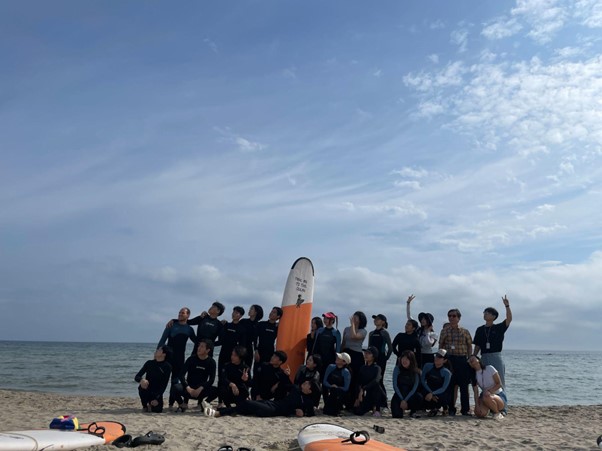
The purpose of such a global residential life at Taejae is to allow young people from different nations and cultures to closely interact with one another while living together and learning together in their everyday lives for almost half a decade. By doing so, Taejae University believes the future generation will find a better path of cooperation, understanding, and harmony between the East and the West, thereby creating a better future for all.
The First Semester: EAT PLAY LEARN
From August to December 2023, the first cohort of Taejae students spent their first semester in Taejae’s student residence in Seoul, South Korea’s capital city. Thanks to the efforts of the University and the students, all twenty-six students in the residence have been safe and sound with no serious injuries, accidents, or crimes, until they finally moved out of the residence at the beginning of the winter vacation.
Taejae’s first student residence was a hotel located in the Euljiro area of Jung-gu (the central district of Seoul) with numerous cultural amenities (museums, art galleries, and Korea’s major historical sites such as the palaces) in its vicinity. Notably, the Gwangjang traditional market - where Netflix explored and filmed various street foods of Korea - was just five minutes away from the student residence on foot, and right next to it was the famous Cheonggyecheon (Cheonggye stream) beloved by Seoul citizens for being a wonderful place for both sightseeing and jogging.
In the first semester, the students resided on the sixteenth and seventeenth floors of the hotel, with each room shared by two or three students. Besides the rooms, the hotel also had common spaces in the basement including a common kitchen, a laundry room, a gym, and a so-called relaxation zone with a few meditation rooms (or nap rooms, to be honest), tables, and a TV screen.
From every Monday to Thursday, the students took classes in Engagli, usually in their rooms or in the common spaces. With the end of the class at 12:40 PM (free at last!), the hungry students then had three options: (1) the simplest way was to rush to nearby restaurants; (2) the most convenient choice was to wait a little bit for meals to be delivered to the residence (because the smart Taejae students used to place an order in advance so that they could relish the food right on time after class); or (3) the healthiest option was to head to the common kitchen to cook their own meals. It seemed about 20% of the students cooked three times a week or more often (but hang on, does microwaving count?) They used to bring rice and some homemade side dishes to the kitchen or to the relaxation zone, enjoying a small yet joyful potluck party filled with chats on different topics ranging from tomorrow’s assignment to this semester's bucket list.
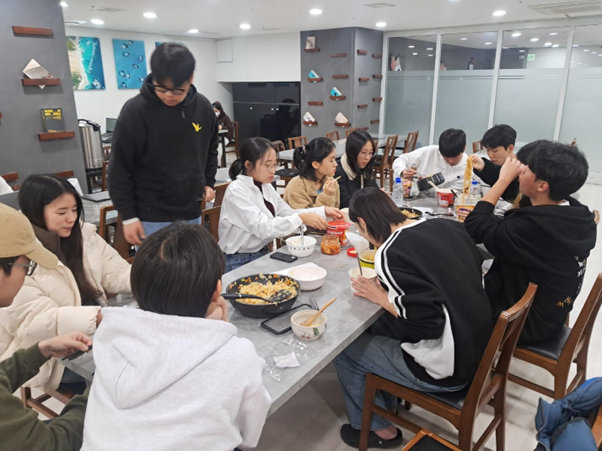
After lunch, some students who preferred studying alone in a quiet environment would go back to their own rooms, while others who liked studying with friends would stay in the common spaces and begin working on the assignments. In the common spaces, English study sessions led by Instructor Ji-young Lee were also available every Monday and Wednesday.
When the Taejae students finally called it a day, they would get involved in different extracurricular or recreational activities. On weekday evenings or on weekends, the students played sports activities such as basketball and badminton. Some went jogging in the nearby Cheonggye Stream. The students also played video/online games or board games. Taejae’s Residence Coordinator (RC) had actually brought several board games (Monopoly, Dixit, and others) to the common spaces so that the students could play them freely at any time.
● The students also joined the RSPs (Residential Social Programs). The RSPs were residential activities organized by the RC, RA (Residence Assistants), and/or students. The first semester had twenty-seven large and small RSPs. The RSPs consist of five categories: (1) social events (various community-building events in which students socialize with one another and build a sense of community); (2) academic events (extracurricular seminars/workshops to fulfill students’ passion for knowledge); (3) arts & culture programs (activities that allow students to immerse themselves more deeply in the local culture and history, for example, visiting art galleries and museums.); (4) health programs (sport and physical activities to enhance students’ health, for example, running and hiking); and (5) student club activities (e.g. rock band, drama club, book club, etc.) Some of the residential activities were routine programs and took place every week. For example, among the social events were the Taejae Talks and town hall meetings.
A Welcoming and Affirming Community
The Taejae Talks were weekly events in which all the students got together in the common spaces (e.g. relaxation zone), and in each Taejae Talk, 2-4 students were given 10-20 minutes each to present themselves freely and creatively before their fellow students. In the Taejae Talks, they told their cohort their life stories, their interests, hobbies, and many other things from who they were before joining Taejae to who they wanted to be after graduating from the university. The students were allowed to use a PPT, Kahoot quiz, Prezi, or any kind of material. They were able to sing, dance, recite a poem, show a video/photo/drawing, or do whatever they liked to express themselves.
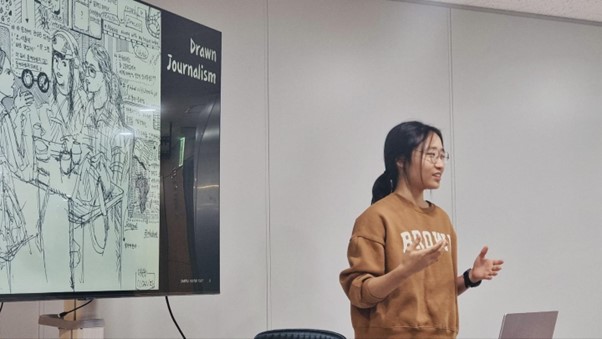
The purpose of the Taejae Talks (which were scheduled to take place for each cohort in its first two semesters only) was to create a platform for the students to get to know each other more deeply within the first two semesters. Rather than sticking to a typical 2-3 minute self-introduction of each student on the first day of the semester, Taejae held the Taejae Talks every Tuesday to grant all the students (including introverted ones) more time, depth, and freedom to present themselves before their cohort.
On Tuesday evenings, the Taejae Talks were followed by another regular event called the town hall meetings. In the town hall meetings, all the students sat together and dined together in the common space while listening to some important announcements delivered by the student council members or by the RC. The students would also discuss any necessary agenda in the town hall meetings.
A Fun and Cohesive Community
Other social events included non-routine programs organized by the RAs. On October 17, led by RA Seongmin Choi, several students gathered in the relaxation zone and had a movie night. They watched an Academy Award-winning film, "Life is Beautiful," which portrayed the sad yet beautiful story of a Jewish father and son in a concentration camp during World War II. The students also solved quizzes on the movie, and the winners were awarded prizes!
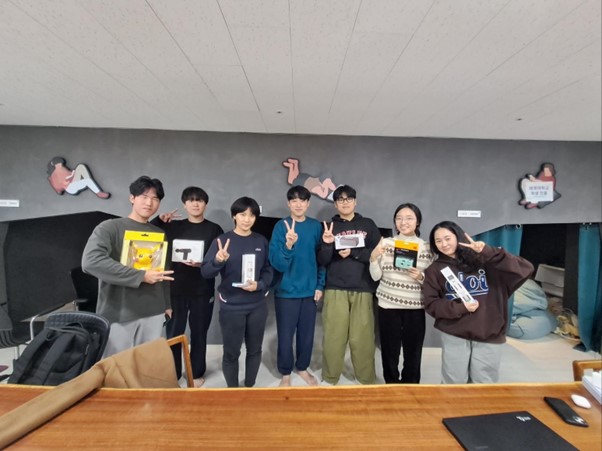
At the end of the same month, RA Neulpum Jeong organized a cooking contest named Masterchef Taejae. Fifteen students took part in the event as either cooks or spectators, and three teams competed with one another, preparing for Kimchijeon (a Kimchi pancake), Mille-Feuille Nabe (a Japanese-style hot pot made with layers of napa cabbage and thinly sliced pork), and thinly sliced Samgyeopsal Jjamppong (a Chinese-style Korean noodle soup mixed with Koreans’ favorite food Samgyeopsal [pork belly barbecue]), respectively. It was an event that allowed the students to boast their cooking skills, and when the contest was over, the event then turned into a feast in which the food was shared by the rest of the participants.
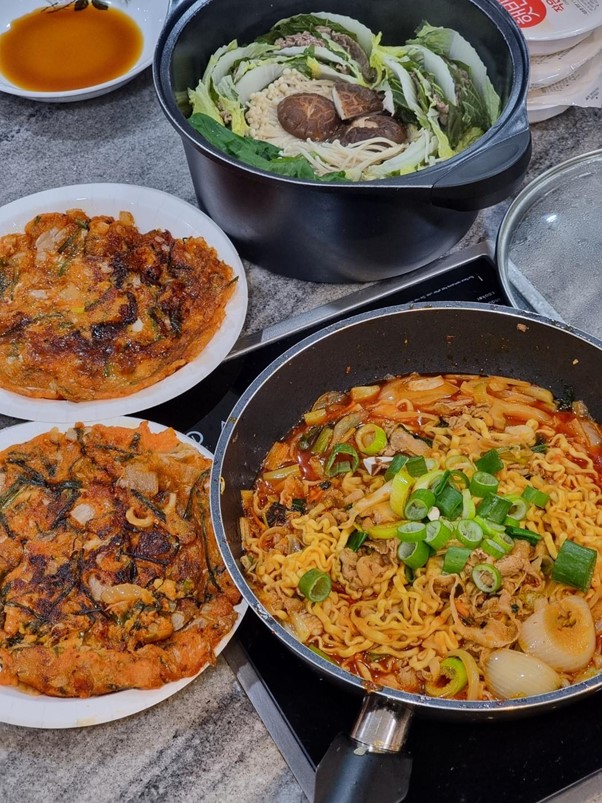
On November 6, we had an award ceremony for another social event called the 21 Days. The 21 Days was planned by RA Bonhyeok Ku to give an opportunity for Taejae students to develop desirable habits in the semester. With several volunteers, Ku initiated the 21 Days program, and each student chose a habit they wanted to form, for example, getting up at 7:15 AM every day, running for an hour every morning, or having breakfast every day. Then, they kept practicing it for twenty-one days until November 6, the day of the award ceremony when the students who successfully finished the program were awarded prizes.
On the following Thursday, there was the Changgyeonggung Night Tour led by RA Youngjun Choi. Sixteen students were dressed in Hanbok (traditional Korean outfit) and went to Changgyeonggung, one of the five main palaces in Korea. The five-century-old palace was well-known for its beauty which even multiplied at nighttime. For a couple of hours in the evening, the students visited different sites in the palace, including Myeongjeongjeon (the main building in which the Korean kings held national ceremonies and greeted foreign envoys), Okcheongyo (a stone bridge near the front gate), and Chundangji, a gourd-shaped lake surrounded by willows, pines, and other trees. We also had a photo contest, and the students took as many photos as possible with enthusiasm in the palace.
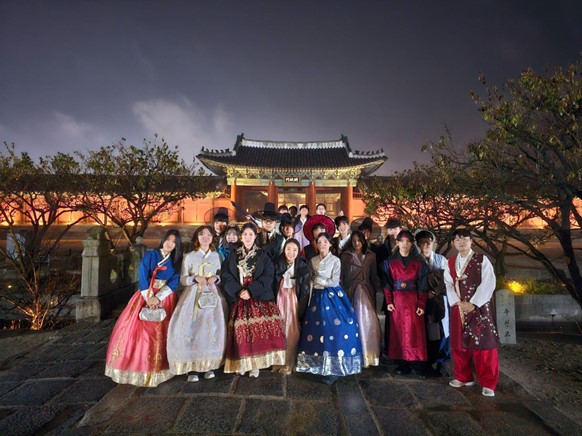
In the following month, the students had a Christmas party in the student residence. They got together in the evening and decorated the relaxation zone with colorful Christmas decorations. After having several fun games, they exchanged gifts with one another at the end of the party. Notably, the event was utterly a student-led activity that was planned and organized by the students themselves from the beginning to the end.
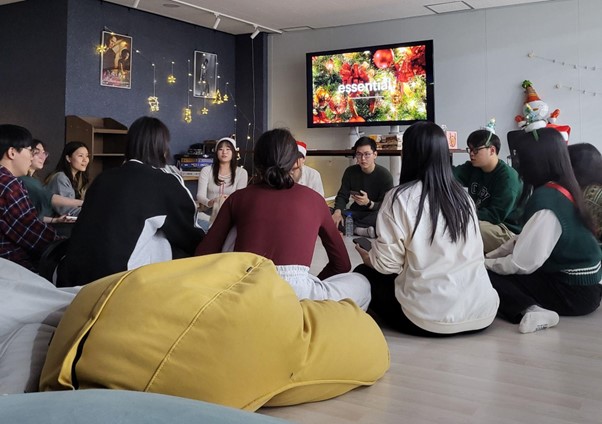
Stay Healthy and Happy
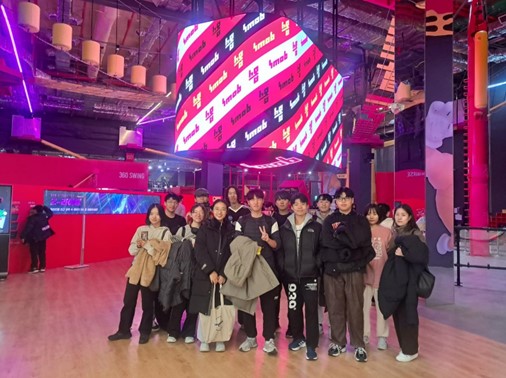
Aside from the student club activities (e.g. school band) and the aforementioned Christmas party, another event in which the students took an initiative was a health program called Activity Day (Sports Day). In early November, the students played different games such as dodgeball and Capture the Flag in an indoor gym outside the residence. To include as many students as possible (as some students might not be fond of vigorous physical activities), they decided to include more relaxing games like a word game and hide-and-seek. As a result, the majority of the students joined the event. At the end of the Activity Day, the students had a feast of pork and beef barbecue in the Gwangjang Market.
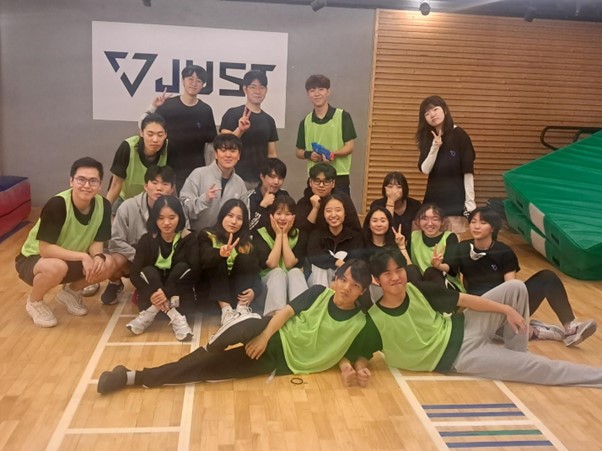
After the Activity Day, the next health program took place on November 30. A dozen students went to a sports facility called the Sports Monster and enjoyed various sports including but not limited to indoor rock climbing, archery, zipline, squash, etc. It was a good opportunity to do all the fun activities in a single place.
Resonate with the Soul of Seoul
In addition to the health programs, there were also arts & culture programs. The ancient city of Seoul whose history traces back to 18 BC is known for its rich artistic and cultural heritage. The arts & culture programs at Taejae this semester involved visiting museums and galleries such as the MMCA (National Museum of Modern and Contemporary Art) Deoksugung and Leeum Museum of Art. In Deoksugung (or the Deoksu Palace), before entering the MMCA inside the palace, the students explored the historical sites related to the modern history of Korea. The darkest moments of Korea’s history that unfolded in the palace included the fall of the Korean Empire (the last kingdom on the Korean Peninsula), Japan’s colonization of Korea, and Korea’s division into North and South after its liberation from Japan with the end of World War II.
A trip to the Leeum Museum of Art was also pleasurable and meaningful. Leeum Museum of Art was founded by the Samsung Foundation of Culture to become a hub of Asian art, connecting the East and the West. This semester, it exhibited works of famous Korean contemporary artists that were not only aesthetic but also mind-blowingly inspiring in the sense that their drawings and sculptures cleverly overturned stereotypes, encouraging the viewers to think outside of the box. Indeed, the experience gave the students a lot to ponder upon.

The opera Turandot, which the students watched in November, also provided a lot of food for thought. The opera was performed in the Goyang Aram Nuri Arts Center, and while sticking to the original work’s songs and lyrics with respect, it changed the background from ancient China to an imaginary totalitarian state with a modern and dystopian vibe, in an attempt to overcome the original piece’s orientalism that had raised a non-negligible amount of criticism. Thanks to President Yeom who generously provided the opera tickets for the students, the students were able to watch the astonishing re-interpretation of the last work of Puccini, one of the most renowned Italian composers!
The bridge between Faculty and Students
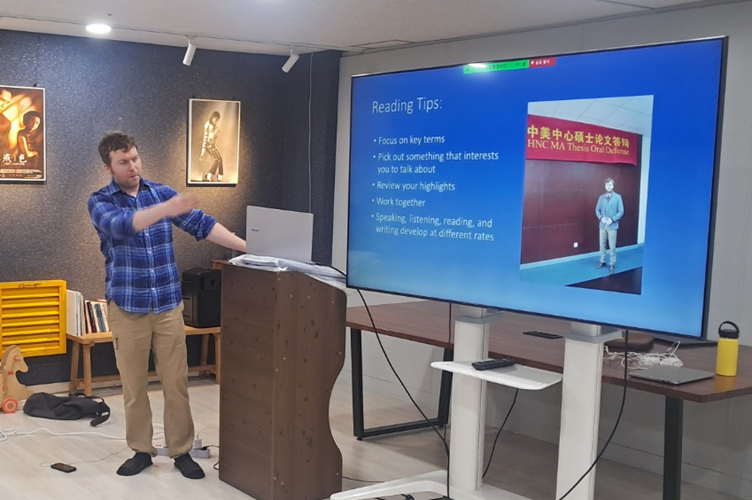
Every month, the Taejae student residence held an academic event named Faculty Talks (Get to Know TJ Faculty), in which a Taejae university professor was invited to the residence and gave a speech to the students. This semester, we invited three professors from the School of Innovation Foundations who were staying in Korea and were having classes with the first cohort. Prof. David Hazard, Prof. Helen Lee, and Prof. Steve Justice visited the residence in September, early November, and late November, respectively. In the relaxation zone, the professors shared their life stories and other interesting and insightful topics that drew a myriad of questions from the students. Through the events, the students who had been attending classes online were able to meet the professors in person. Thus, Faculty Talks helped the students connect more deeply with their professors. We would like to express our sincere gratitude to Prof. Hazard, Prof. Lee, and Prof. Justice for their precious time and kindness!
Towards a More Diverse Community and Residential Activities
The average attendance rate of the academic events amounted to about 69%, which was the second highest among all the RSPs. The routine social events such as the Taejae Talks and the town hall meetings had the highest average attendance rate of about 73%. As for the social events organized by the RAs, half of the students joined the activities on average. The health programs and the arts & culture programs were optional to the students this semester and it turned out that an average of 65% and 35% of the first cohort participated in each category of events, respectively.
The ultimate goal of the RSPs in the first semester was to build a sense of community among the first cohort of students. In order to achieve this goal, most of the university-funded RSPs tended to be large events that urged the participation of the majority of the students. However, in the second semester, cultural immersion is going to be added as a new goal in addition to community building and the name itself will also change from the RSPs(Residential Social Programs) to the RCPs(Residential Campus Programs). After all, international students will finally be able to come to Korea and join the cohort in the Seoul residence in the coming semester! Thus, the residential activities in the second semester will focus on helping them connect more to Korea and to other Taejae students who have waited for them in Seoul. Moreover, the RCPs are only sometimes going to be large-scale events all the time. Instead, more diverse programs, even with a smaller number of participants for each, will be supported by the university to consolidate the bonds among the students in a more qualitative way.
Student Empowerment
Furthermore, based on the observation that more student involvement in the organization of programs led to more participation, the students are going to be given more opportunities and resources to plan, organize, and lead the residential activities in the following semester. Taejae University had hired external personnel (former RAs in other university residences) as the RAs for the Taejae student residence in Seoul (Kudos to the first RAs for doing a wonderful job in the first semester!) However, in the upcoming semester, Taejae is going to empower its own students to take over the role of RAs. The new RAs are going to plan and lead the RCPs while assisting the RC with student residence affairs in the new student residence.
More Independent & More Responsible Taejae
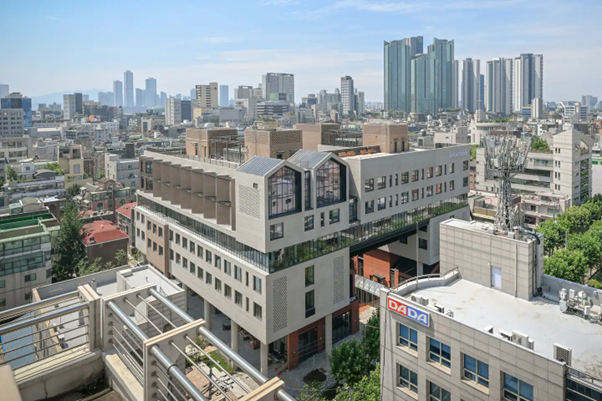
In fact, the Seoul residence will be moved from Euljiro to Hongdae. Hongdae is an area in the west of Seoul with a more modern vibe and is also known as the mecca of urban arts and indie music culture in Korea. Hopefully, the new residence will offer fresh and new experiences to Taejae students in the next semester. At the same time, the new residence will encourage the students to be more independent and responsible. While the former residence in Euljiro was a hotel in which the students’ rooms were cleaned and the bed sheets were changed by the hotel every week, the new residence in Hongdae is a co-working & co-living space with wider common spaces (but with, of course, no more cleaning service). Obviously, the students will learn how to live with more responsibilities (for example, taking care of their own rooms and doing their chores). This will certainly help them get themselves ready for the future global rotation in different cities where independence and adaptability are going to be key success factors.